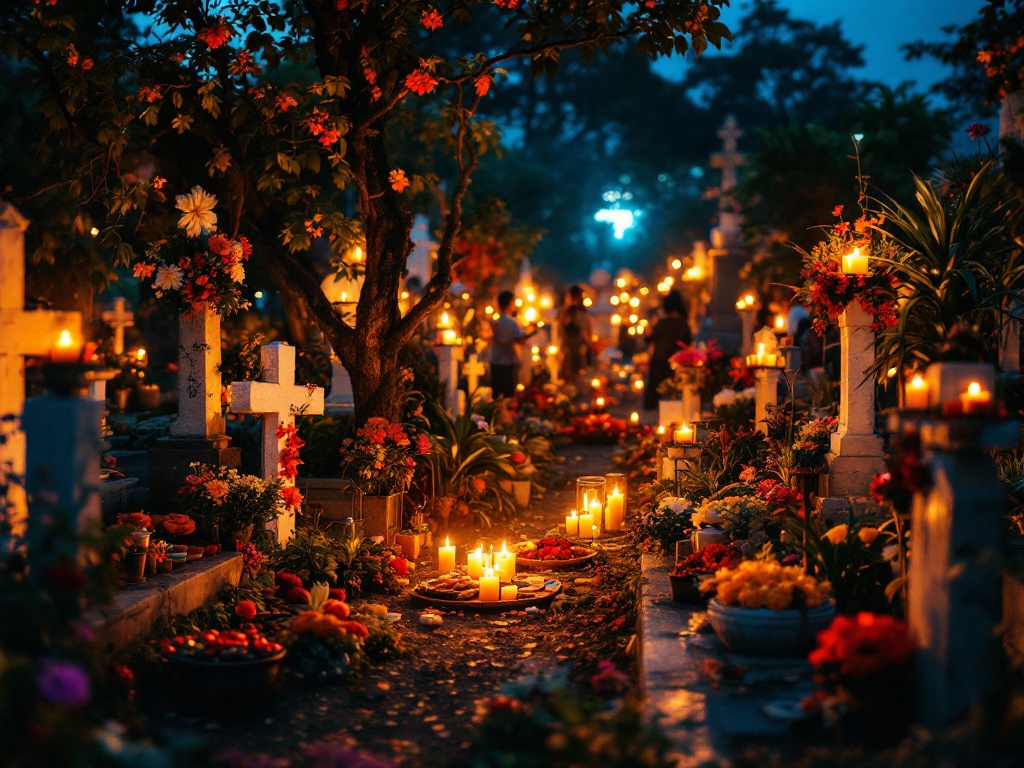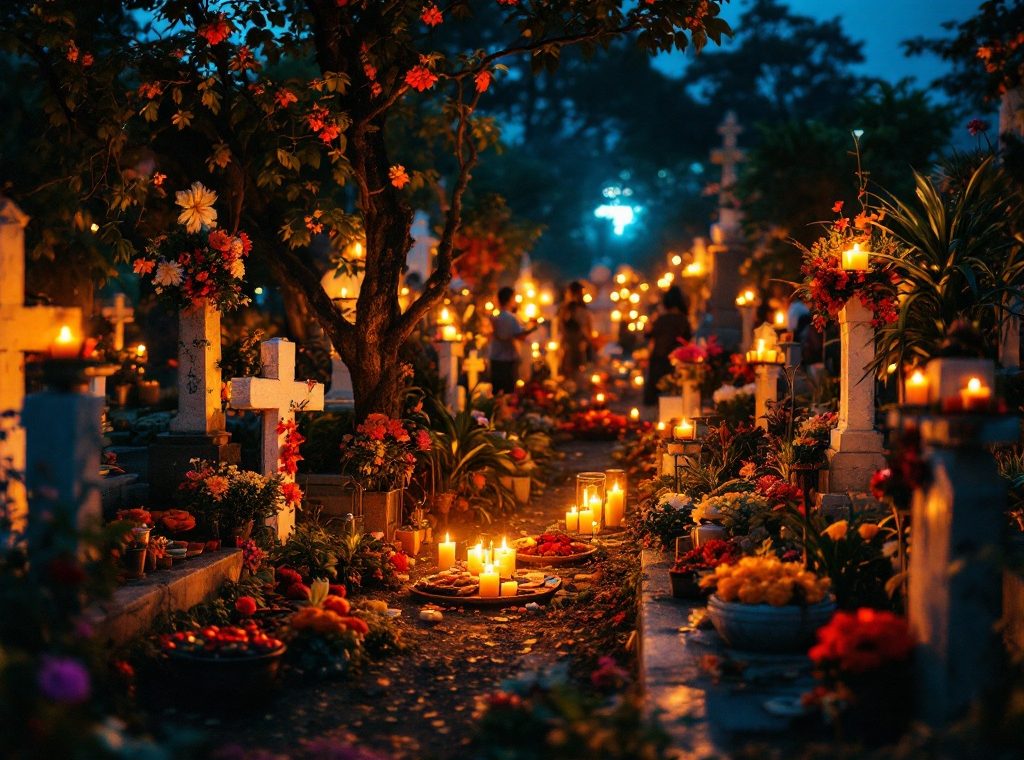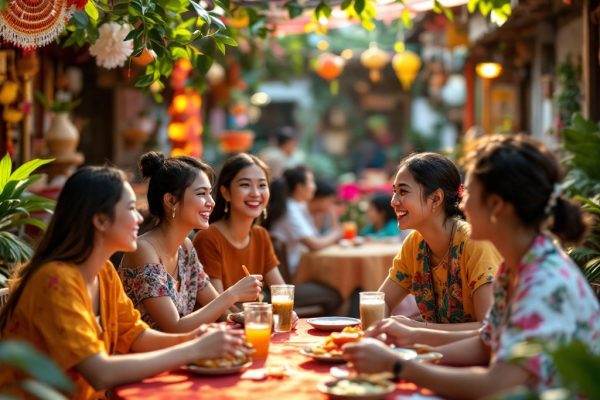How to Celebrate Halloween in the Philippines
Discover the vibrant and unique way Filipinos celebrate Halloween! Spanning from October 31st to November 2nd, this period, known as Undas, blends ancient traditions with modern festivities. Explore how families honor their departed loved ones through cemetery visits, special food offerings called *atang*, and the moving custom of Pangangaluluwa. Learn about the historical and cultural significance of All Saints’ Day and All Souls’ Day in the Philippines, and delve into the delicious treats and exciting events that make this celebration so special. Uncover the heart of Filipino Halloween – a poignant blend of remembrance, family, and vibrant cultural expression. Read on to learn more!
Important information

- Halloween in the Philippines is a multi-day celebration, called Undas, focused on remembering and honoring deceased loved ones.
- Key dates include October 31st (Halloween), November 1st (All Saints’ Day), and November 2nd (All Souls’ Day).
- Traditional activities involve visiting cemeteries, cleaning graves, offering prayers, flowers, food (atang), and lighting candles.
- Modern celebrations incorporate Western influences like costume parties and trick-or-treating, alongside older traditions like Pangangaluluwa (singing for alms).
- Families share special foods like kakanin (rice cakes), pastillas de leche, and candied sampalok during this period.
Understanding Halloween Celebrations in the Philippines
In the Philippines, Halloween is celebrated over several days, including All Saints’ Day (November 1st) and All Souls’ Day (November 2nd), a period known as Undas. Families gather to honor their departed loved ones. Traditional activities include visiting cemeteries, cleaning graves, and offering prayers, flowers, and food. This unique tradition blends ancient Filipino beliefs with Catholic practices. While trick-or-treating and costume parties have gained popularity due to Western influence, the heart of Filipino Halloween remains focused on family and remembrance. It is a poignant time for honoring those who have passed away.
What Makes Filipino Halloween Traditions Unique?
In the Philippines, Halloween is a unique blend of remembrance and celebration, coinciding with All Saints’ Day (November 1st) and All Souls’ Day (November 2nd). Families gather in cemeteries, adorning graves with flowers, food, and candles to honor their departed loved ones.
How Do Families Prepare for Halloween?
Filipino families commence their Halloween preparations weeks in advance, focusing on costumes and special food offerings called *atang* to honor their deceased loved ones. They also collect candles and flowers for cemetery visits, making it a poignant period of remembrance.
Key Dates: October 31 to November 2
October 31st brings the spooky fun of Halloween, yet the following day, November 1st, marks All Saints’ Day, honoring Christian saints. Then, on November 2nd, All Souls’ Day remembers the faithful departed. These three consecutive days offer a unique period for reflection on those who have passed.
October 31st: Halloween. This day is filled with spooky fun and celebrations.
November 1st: All Saints’ Day. This day honors Christian saints.
November 2nd: All Souls’ Day. This day is a time to remember the faithful departed.
October 31: Halloween Night
In the Philippines, Halloween night (October 31st) begins a unique multi-day celebration culminating with All Souls’ Day on November 2nd. This period is dedicated to remembering deceased loved ones, as families gather to honor their memory and pay their respects.
November 1: All Saints Day
Filipinos commemorate All Saints’ Day on November 1st, a time to honor their departed loved ones. Families gather at cemeteries, adorning graves with candles and flowers. They share meals and reminisce, keeping the memories of their relatives alive. This tradition is a vital part of the extended Filipino Halloween observances, fostering remembrance and connection.
November 2: All Souls Day
In the Philippines, November 2nd is All Souls’ Day, or *Araw ng mga Patay*, a time to honor the departed. Families gather in cemeteries to clean graves and offer food and flowers in remembrance.
Filipino Traditions and Cultural Practices
Filipino Halloween traditions are a captivating blend of old and new, mixing indigenous customs with influences from Spain and the United States. A key observance is Undas (Araw ng mga Patay) on November 1st and 2nd. Families gather in cemeteries to honor their deceased relatives. They clean graves, offer prayers, light candles, and share food, creating a festive atmosphere of remembrance. Families share stories and celebrate the lives of those who have passed. Similar to trick-or-treating, Pangangaluluwa involves singing and asking for alms for souls in purgatory. Modern celebrations, especially in urban areas, also embrace Halloween parties with costumes and trick-or-treating. This demonstrates how Filipino traditions evolve by integrating global practices while preserving core values of family and remembrance.
Traditional Observances
- Undas (Araw ng mga Patay): families gather at cemeteries on November 1st and 2nd to honor deceased relatives.
- Grave cleaning, prayers, candle lighting, and food sharing create a festive atmosphere of remembrance.
- Storytelling and celebrations honor the lives of those who have passed.
- Pangangaluluwa: similar to trick-or-treating, people sing and ask for alms for souls in purgatory.
Modern Celebrations
- Halloween parties with costumes and trick-or-treating are common, especially in urban areas.
- These modern celebrations demonstrate how Filipino traditions integrate global practices.
- The core values of family and remembrance remain strong.
Family Reunions and Cemetery Visits
Filipinos honor their departed loved ones during Undas, a time for families to gather at cemeteries. They bring food and drinks, creating a festive atmosphere while cleaning and decorating graves. It’s a poignant reunion, blending reverence with the joy of togetherness as they remember those who have passed.
Pangangaluluwa: Filipino Trick-or-Treating
In the Philippines, children celebrate Pangangaluluwa around Halloween, a tradition akin to trick-or-treating. They go door-to-door, singing and offering prayers in exchange for treats and small gifts. This custom is deeply rooted in Filipino culture.
Food Offerings and Atang
Atang, a Filipino tradition, honors the departed by preparing food and drink offerings. These are placed on altars in homes and on tombstones in cemeteries, especially during All Saints’ Day and All Souls’ Day. Families gather to remember their ancestors, connecting with them through this powerful expression of remembrance. This time-honored ritual strengthens familial bonds across generations.
Lighting Candles and Saying Novena Prayers
All Saints’ Day in the Philippines is a time for families to remember their loved ones. Gathering at gravesites, they light candles and offer novena prayers in a deeply spiritual tribute.
Festive Gatherings and Halloween Events
Halloween in the Philippines is a vibrant fusion of tradition and revelry. The Pinoy Folklore Halloween Party and the Poblacion Halloween Street Party perfectly embody this blend, merging Filipino culture with contemporary Halloween festivities. Imagine themed parties and captivating games alongside activities for all ages. Costume contests are a major draw, showcasing impressive creativity and local traditions with dazzling displays.
Pinoy Folklore Halloween Party
Experience a unique Halloween celebration with a Filipino twist at the Pinoy Folklore Halloween Party. Discover captivating stories and traditional creatures while enjoying authentic Filipino cuisine and engaging activities. This culturally enriching event offers a vibrant taste of Filipino heritage, providing a unique alternative to traditional Halloween festivities.
Poblacion Halloween Street Party
Makati’s Poblacion district in the Philippines is known for its vibrant Halloween street party, famous for its exciting atmosphere.
Celebrating with Local Delicacies and Treats
Filipinos treasure a variety of traditional candies. From the sweet *pastillas de leche* (milk candies) to the tangy candied *sampalok* (tamarind), these treats are beloved favorites. Rice cakes, such as *biko*, *kakanin*, and the colorful layered *sapin-sapin*, are also popular choices, tempting everyone’s taste buds. During gatherings and cemetery visits, families share these sweets and other special dishes, known as *atang*, to honor their deceased loved ones, often including the departed’s favorite foods in the offerings.
Traditional Filipino Candies: Pastillas de Leche and Candied Sampalok
Pastillas de leche are sweet, creamy milk candies. Candied sampalok, on the other hand, offer a tangy tamarind flavor. Both are popular Filipino treats, especially during Halloween festivities.
Pastillas de Leche
These candies offer a sweet and creamy milk flavor.
Candied Sampalok
These candies provide a tangy tamarind experience.
Both are popular treats in the Philippines, especially during Halloween.
Rice Cakes and Other Filipino Sweets
During Undas, the Filipino celebration of All Saints’ and All Souls’ Days, families share a variety of traditional foods. Kakanin, or rice cakes, are especially popular. Some examples include the purple puto bumbong and the coconut-infused bib















